Here’s the best way to see the blood moon eclipse in L.A. on May 15
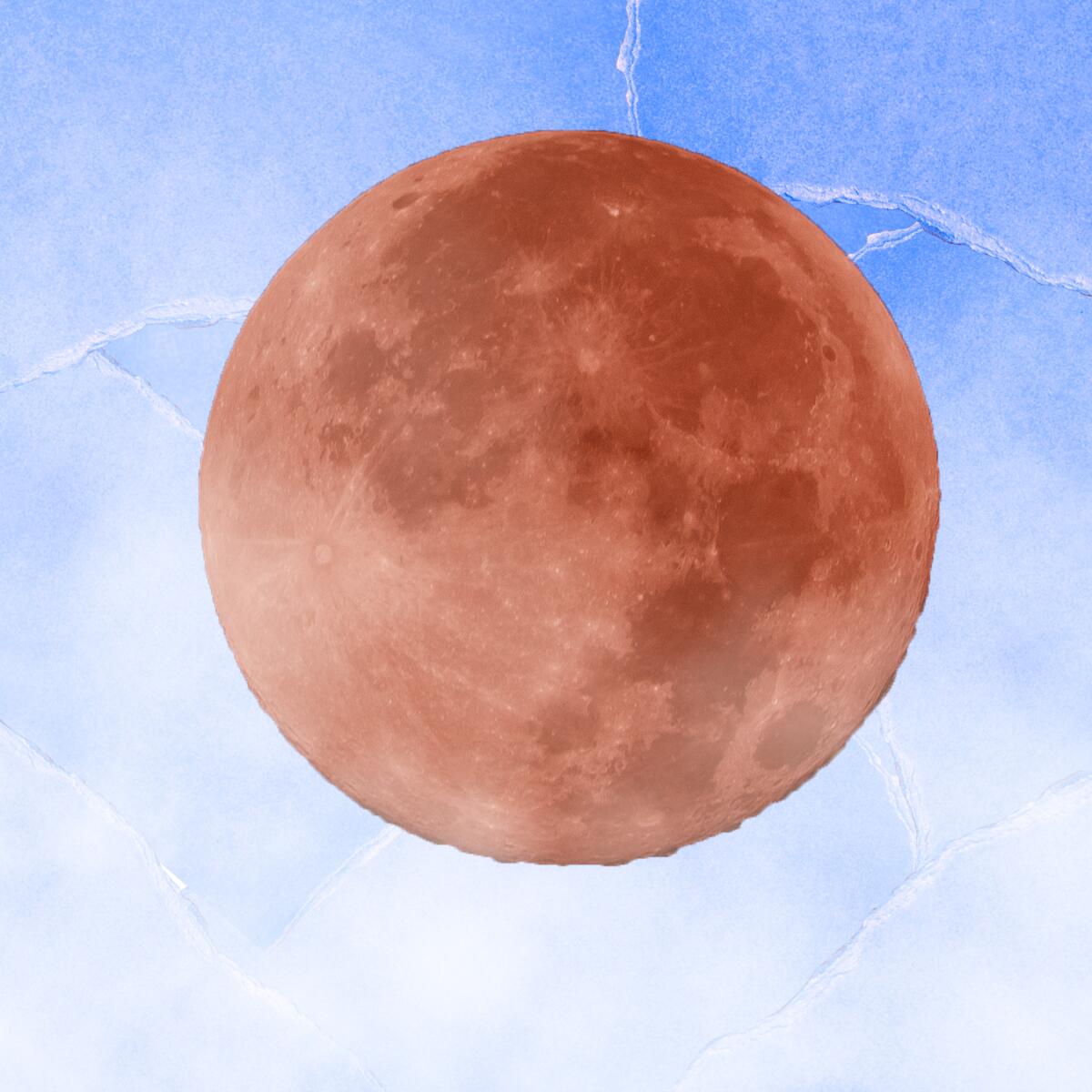
- Share via
Get ready for the first total lunar eclipse of 2022. On May 15, the moon will disappear during a celestial event fully visible in Los Angeles and the rest of the U.S. Totality, or total darkness, starts at 8:29 p.m. But here’s something else to look for: a “blood moon,” which means “the usually whiteish moon becomes red or ruddy brown,” according to Space.com.
Why the redness? The Earth’s atmosphere “absorbs and scatters shorter wavelengths in the blue and green parts of the spectrum, so the light that gets to the moon is preferentially reddish,” the website reports. The celestial show of total darkness begins at 8:29 p.m. and lasts until 9:53 p.m.
Here are tips for viewing the blood moon eclipse:
- Find a dark spot away from city lights.
- Make sure you have a clear view looking toward the east or southeast.
- You’ll need clear skies to see the eclipse, but you won’t need binoculars.
- You don’t need to wear protective eye gear, either. You can look at this eclipse with the naked eye.
If you want to watch with the pros, the Griffith Observatory in Griffith Park will livestream all phases of the eclipse from 7:35 to 11:50 p.m. May 15 (weather permitting). Or maybe you want to paddle under the moon from Portofino Hotel and Marina in Redondo Beach. The one-time event called the Dockside of the Moon will be led by REI guides. Cost is $175 per person; a portion of the proceeds go to the Marine Mammal Care Center in San Pedro. The paddle departs at 8 p.m. May 15 and lasts 90 minutes. Register by calling (310) 798-5869.
More moon happenings in 2022: There will be supermoons — bright full moons — on June 14 and July 13. Supermoon, by the way, isn’t an official term. Space.com explains that astrologer Richard Nolle first coined the term to identify a moon at or near its closest approach to Earth.
5 things to do this week
(Li Anne Liew / Los Angeles Times; Getty Images)
1. What Mom really wants for Mother’s Day on Sunday. “There are so many extraordinary things in L.A. that we never get around to experiencing,” Times staffer Lisa Boone writes. “This Mother’s Day, why not give moms the best gift of all: an L.A. adventure.” Think about outdoor adventures such as biking the Venice Electric Light Parade together, looking for peacock chicks at the L.A. Arboretum, and taking a hike to Amir’s Garden in Griffith Park. Lisa’s story offers 20 fun things to do on Mother’s Day — and beyond.

2. Nine ways to hike to the Hollywood sign. Let’s start with this: You can’t really walk up to or climb the 44-foot-tall letters of the Hollywood sign. Still, you can take a hike or horseback ride to get close to L.A.’s iconic landmark and learn how to get there on foot. Casey Schreiner has written Griffith Park guidebooks and runs the Modern Hiker website. His list of nine little-known routes to the sign includes one starting at the Hollywood and Highland complex and one from Mulholland Dam. Try one, or try them all, to embrace L.A.’s true wild side.
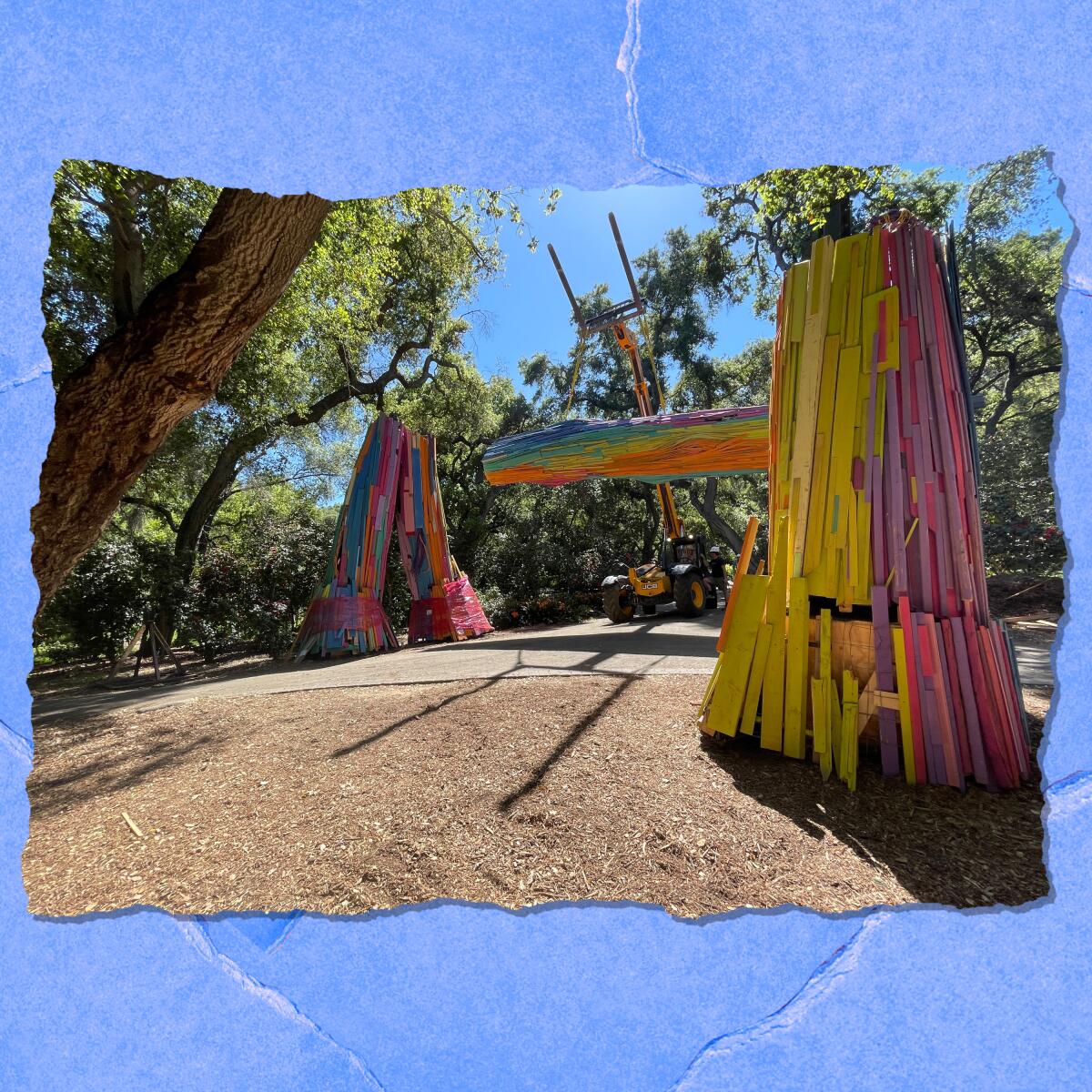
3. Seek out ‘Your (Un)Natural Garden’ at Descanso Gardens. The gardens in La Cañada Flintridge are always a wonder in spring when cherry trees and tulips come into their own. Now artist Adam Schwerner adds a novel touch: installations made from recycled and found materials. The pieces, titled “Your (Un)Natural Garden,” appear at the Sturt Haaga Gallery, the Boddy House, and at sites throughout the gardens. Schwerner worked with experiential environment designer Pink Sparrow as well as JUST Design and Art Mafia in creating the show. It opened in mid-April and will be on display through Jan. 8.
Cool stuff
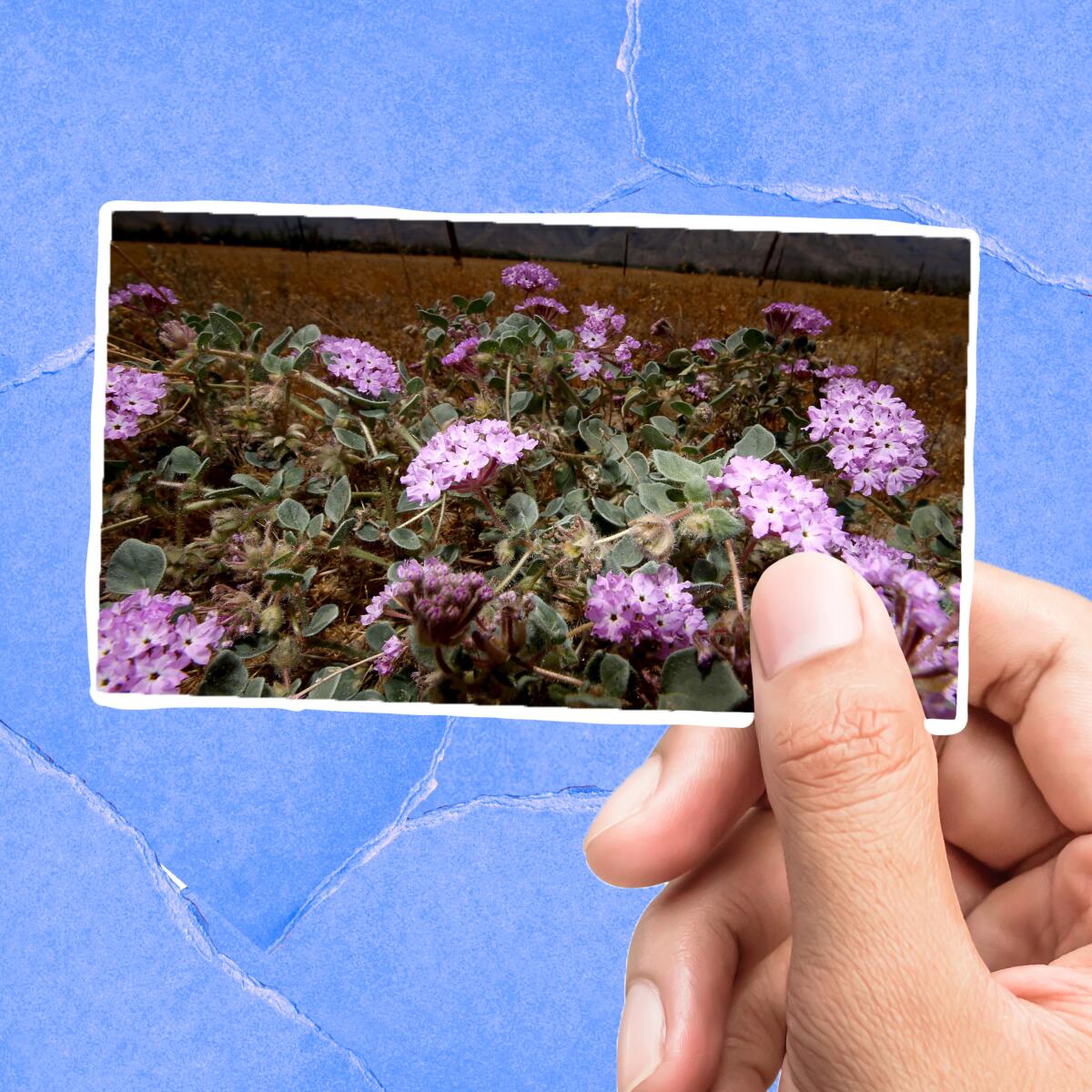
California State Parks is launching a cool new way to make it easier for people to access parks. You can use a library card from California’s more than 1,100 public libraries to check out a pass that’s good for day entry at more than 200 state parks.
Here’s how it works: Go to your local library and check out the pass (as you would a book) for a week to three weeks, depending on the library’s lending policy. Make sure a librarian has scanned and activated the pass. Then display the pass on your rearview mirror any time you visit a park. The pass is good for one vehicle (with up to nine people) or one motorcycle.
The devil, of course, is in the details. Libraries in the city of L.A. will collectively receive 355 passes, a pretty small number to serve the almost 4 million residents. Not all library branches will get the same number of passes to distribute. “In an attempt to put the greatest number of passes into the hands of Californians whose income may be a barrier to visiting state parks, state parks will be providing a higher number of passes to branches in ZIP Codes where there is high population density and a high poverty index percentage,” the agency said in a statement sent by email. I like this idea and hope the program will expand in the future.
Wild things
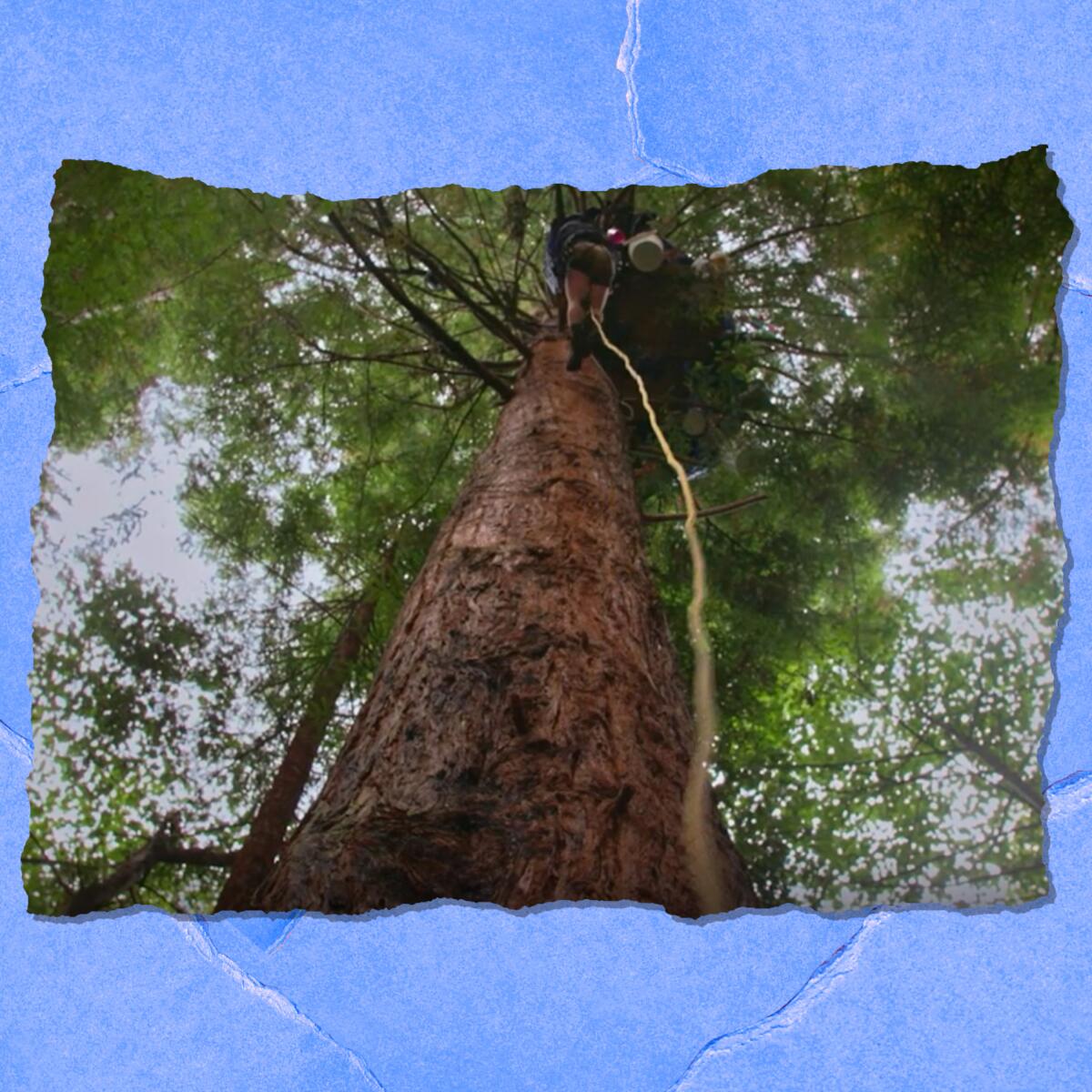
You’ve probably heard occasionally about tree-sitters who protect forests by living in their canopies. But what does that look like day to day? An L.A. Times short documentary called “Sentinels” follows a small group of environmentalists who have mounted a tree-sitting campaign to stop clear-cutting in a Northern California forest. The film magnifies the sounds and feel of the forest while following the activists in their extraordinary quest.
Co-directors Derek Knowles and Lawrence Lerew wrote of their film: “‘Sentinels’ grew out of our interest in exploring storytelling based around ethnoecology and the ways that human culture interacts with the natural world. From the beginning we knew that we wanted the film to be sensory and experiential, blending observational camerawork with the slow-cinema narrative grammar of filmmakers like Kelly Reichardt. In doing so, our hope is that the film transports audiences into the redwood forests that the film’s subjects are defending.”
The must-read
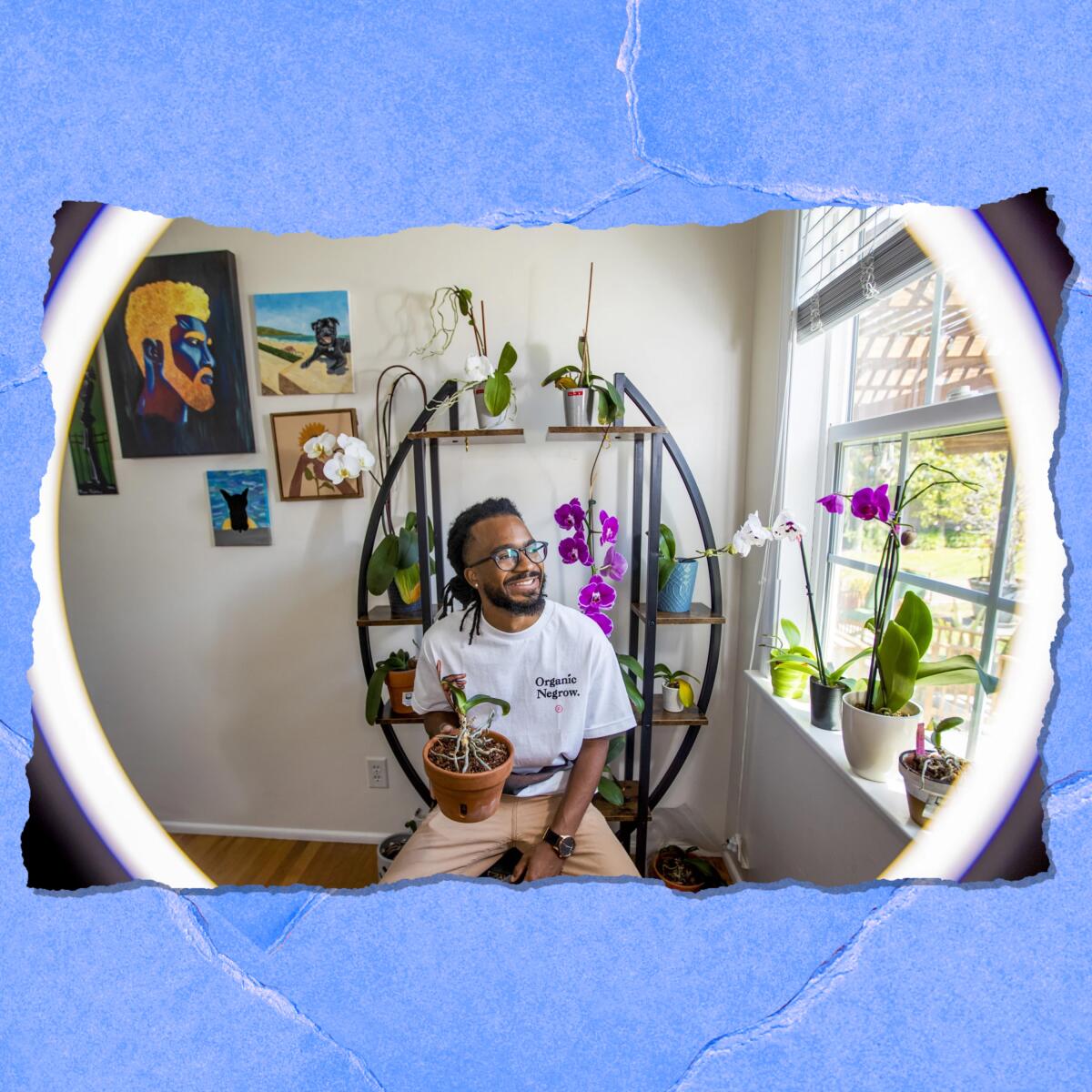
Physical therapist Terry Richardson is a self-taught orchid rescuer. Yep, those orchids that you bought at Trader Joe’s and left for dead? He rescued one from a dumpster, named it Penelope and taught himself how to keep orchids (including Phalaenopsis a.k.a. moth orchids) alive and blooming. And he has a cool moniker: the Black Thumb. “I rescue limbs by day and rescue orchids by night,” Terry told the L.A. Times in this story. But it goes both ways — the plants helped him too. “I don’t know how I would have gotten through the earlier days of the pandemic without plants,” he said, “especially without orchids.”
The red flag
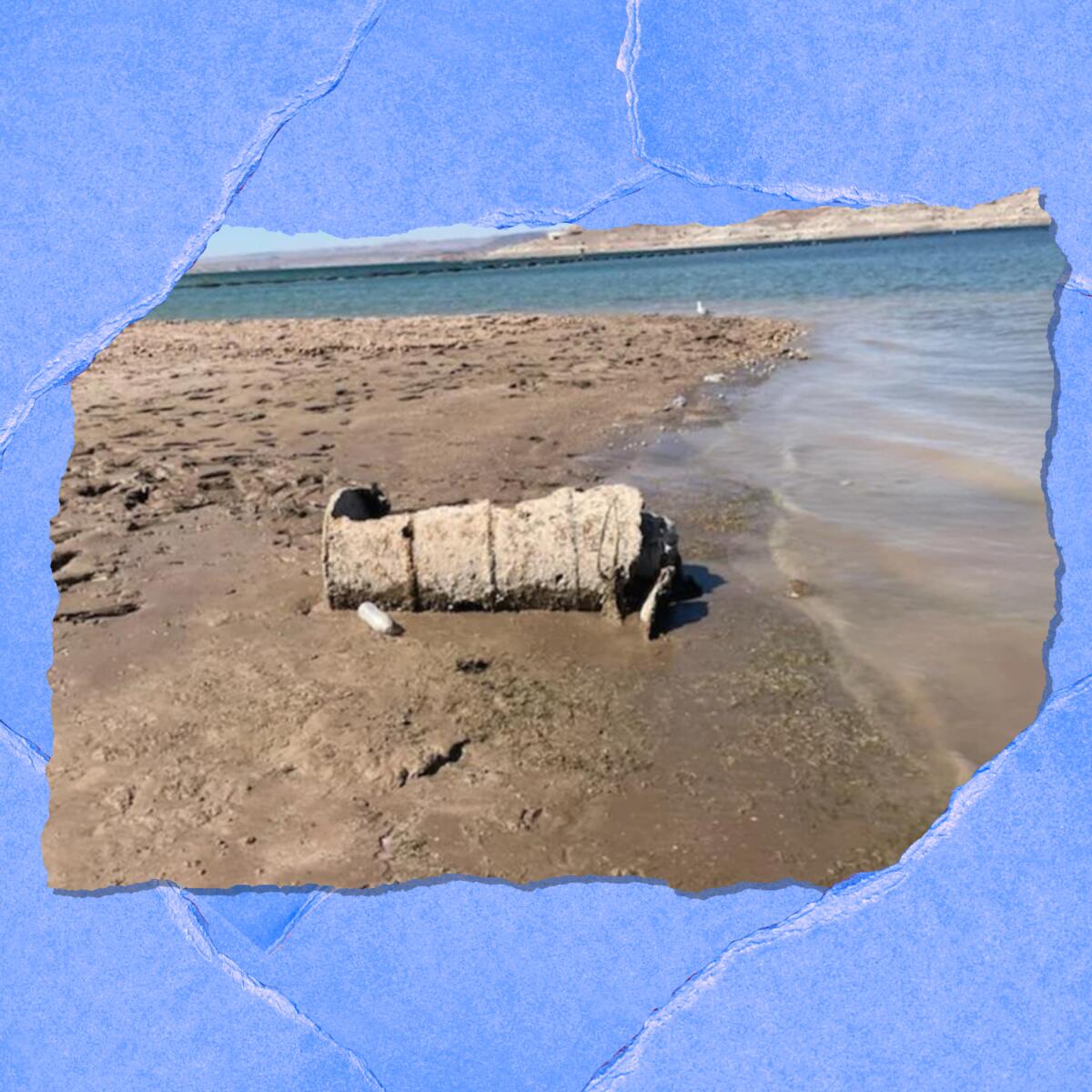
The waters at Lake Mead on the border of Nevada and Arizona have fallen to historic lows. One of the consequences: the discovery of human remains inside a barrel, which became visible as water levels plummeted. “I would say there is a very good chance as the water level drops that we are going to find additional human remains,” Lt. Ray Spencer with the Las Vegas Metro Police said in this L.A. Times story. The identity of the victim, likely killed four decades ago, has not been released.
P.S.
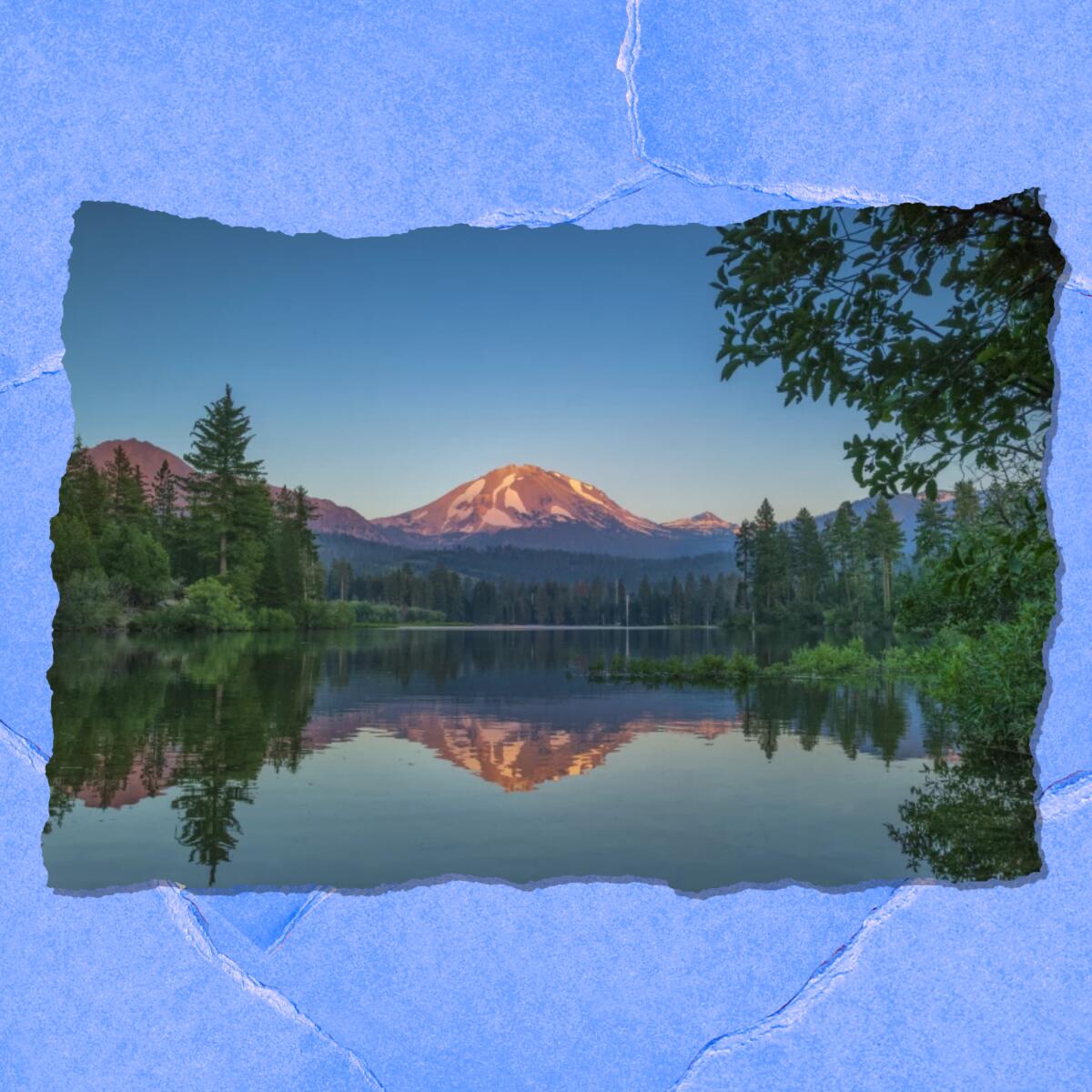
Can yogurt and snow keep you alive in an emergency? Apparently so. Sheena Gullett, 52, was stranded in a remote forest near Lassen National Park. She and her companion Justin Lonich, 48, were in trouble after their truck got stuck in the snow when they were driving to a community called Little Valley in mid-April. “Over the six days she was stranded, Gullett rationed a six-pack of yogurt, eating one container per day, deputies said,” according to this L.A. Times story. “She had no water and ate snow to stay hydrated.”
Enjoying this newsletter? Consider subscribing to the Los Angeles Times
Your support helps us deliver the news that matters most. Become a subscriber.
Send us your thoughts
Share anything that’s on your mind. The Wild is written for you and delivered to your inbox for free. Drop us a line at TheWild@latimes.com.
Click to view the web version of this newsletter and share it with others, and sign up to have it sent weekly to your inbox. I’m Mary Forgione, and I write The Wild. I’ve been exploring trails and open spaces in Southern California for four decades.

Sign up for The Wild
We’ll help you find the best places to hike, bike and run, as well as the perfect silent spots for meditation and yoga.
You may occasionally receive promotional content from the Los Angeles Times.




